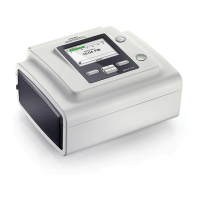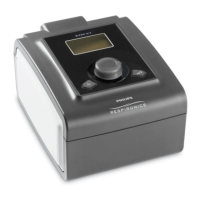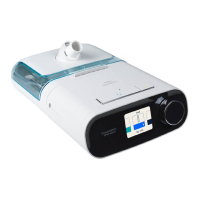
Do you have a question about the Philips BiPAP and is the answer not in the manual?
| Humidification | Integrated heated humidifier |
|---|---|
| Dimensions | Varies by model |
| Weight | Varies by model |
| Device Type | BiPAP |
| Manufacturer | Philips |
| Modes | CPAP |
| Ramp Time | 0-45 minutes |
| Data Storage | SD card |
| Power Supply | AC power |
| Power Source | AC |
Describes key physical features of the device, such as the air outlet port and filter area.
Explains the purpose of the display screen, control wheel, and ramp button.
Outlines the different therapy modes, including Bi-level, Auto Bi-level, and CPAP.
Provides instructions on how to install and maintain the device's air filters.
Details the steps for connecting the mask, tubing, and optional filters to the device.
Explains how to connect the device to an AC power source safely.
Details the process of turning on airflow and starting therapy from the Home screen.
Advises on adjusting the mask for optimal fit and addressing leaks during therapy.
Explains the ramp feature that gradually increases pressure to aid sleep.
Describes the feature that checks mask seal before therapy begins.
Allows adjustment of the Flex comfort feature for exhalation pressure relief.
Enables adjustment of the time taken for the device to transition from EPAP to IPAP.
Allows trying out Flex and Rise time settings temporarily before applying them.
Allows adjustment of Flex comfort and Rise time settings for personalized therapy.
Explains how to enable humidity control and select the desired humidity level.
Displays and allows adjustment of the ramp starting pressure.
Details the setting for mask leak detection and audible alerts.
Explains how to access and interpret the information screen displaying therapy data.
Details metrics like Therapy hours, Days > 4, and 90% Pressure for therapy assessment.
Explains how to interpret AHI and Periodic Breathing data for therapy effectiveness.
Describes alerts requiring immediate or prompt attention due to critical or non-critical issues.
Covers alerts like Service Required, Mask Alert, Auto Off, and Humidifier Alert.
Details alerts for accepted/rejected prescriptions, incorrect insertion, and full capacity.
Informs about scheduled reminders and messages from the home care provider.
Addresses alerts for corrupted or incorrectly inserted SD cards.
Notifies about modem connection status and potential failures.
Addresses issues where the device does not power on or produce airflow.
Offers solutions for erratic displays and the ramp feature not working.
Suggests checking filters, ventilation, and tubing settings for airflow issues.
Explains how to add a humidifier, use the SD card, and add supplemental oxygen.
Details how to power the device using a DC power source.
Offers advice on traveling with the device, including airline use and voltage compatibility.
Guides on cleaning the device, filters, and tubing.
Advises on when to contact a home care provider for service and malfunction issues.
Details operating temperature, humidity, dimensions, and weight.
Outlines power consumption, noise levels, and standards compliance.
Details the accuracy and stability of pressure delivery for different therapy modes.
Presents typical maximum flow rate data for Auto Bi-level and CPAP modes.
Provides contact information for customer service and the manufacturer's address.











